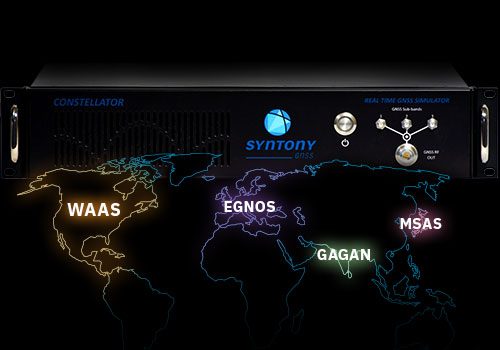Why SBAS Testing is Important
Satellite-Based Augmentation Systems (SBAS) play a critical role in improving the accuracy and reliability of GNSS signals. By providing correction messages, SBAS enhances the Position, Velocity, and Time (PVT) accuracy of GNSS receivers within their coverage area. These systems, which include EGNOS, WAAS, and others, transmit data that helps correct satellite orbit errors, clock drifts, and ionospheric delays. The increasing complexity of GNSS constellations and the need for high precision in applications such as aviation, maritime, and autonomous vehicles make SBAS testing indispensable.
Understanding the intricacies of SBAS involves simulating real-world conditions where GNSS signals might be affected by various perturbations. Traditional testing setups often fall short in replicating these complex scenarios accurately. This is where the Constellator GNSS Simulator by Syntony steps in, offering a sophisticated solution for comprehensive SBAS testing.
Constellator MAGIC: Addressing the Simulation Challenge
Syntony’s Constellator GNSS Simulator, equipped with the MAGIC feature, provides a robust platform for SBAS receiver testing. MAGIC stands for Module for Automatic Generation of Inaccuracies and Corrections, and it significantly enhances the simulator’s capability to create realistic testing conditions. MAGIC allows for real-time generation of GNSS signals, including the perturbations and corrections from SBAS constellations, thus providing a high-fidelity testing environment.
In a recent demo video, Syntony showcased how MAGIC works within Constellator. The demonstration highlighted the configuration and execution of a simulation scenario designed to test SBAS receivers. Initially, the simulation ran without any perturbations, showing stable pseudorange residuals and excellent PVT precision. When perturbations were introduced, the pseudorange residuals increased significantly, reflecting the challenges faced by GNSS receivers in real-world conditions. However, upon enabling SBAS corrections, the simulator demonstrated how the receiver’s accuracy improved drastically, validating the effectiveness of SBAS in mitigating GNSS signal errors.
The Constellator GNSS Simulator’s ability to handle multiple constellations and frequencies, along with its advanced perturbation and correction generation capabilities, makes it an essential tool for developers and testers in the GNSS industry. Its user-friendly interface and flexibility further enhance its appeal, allowing for seamless integration and operation.
To discover more demos about Constellator features, visit the dedicated YouTube Channel and subscribe for future videos.
